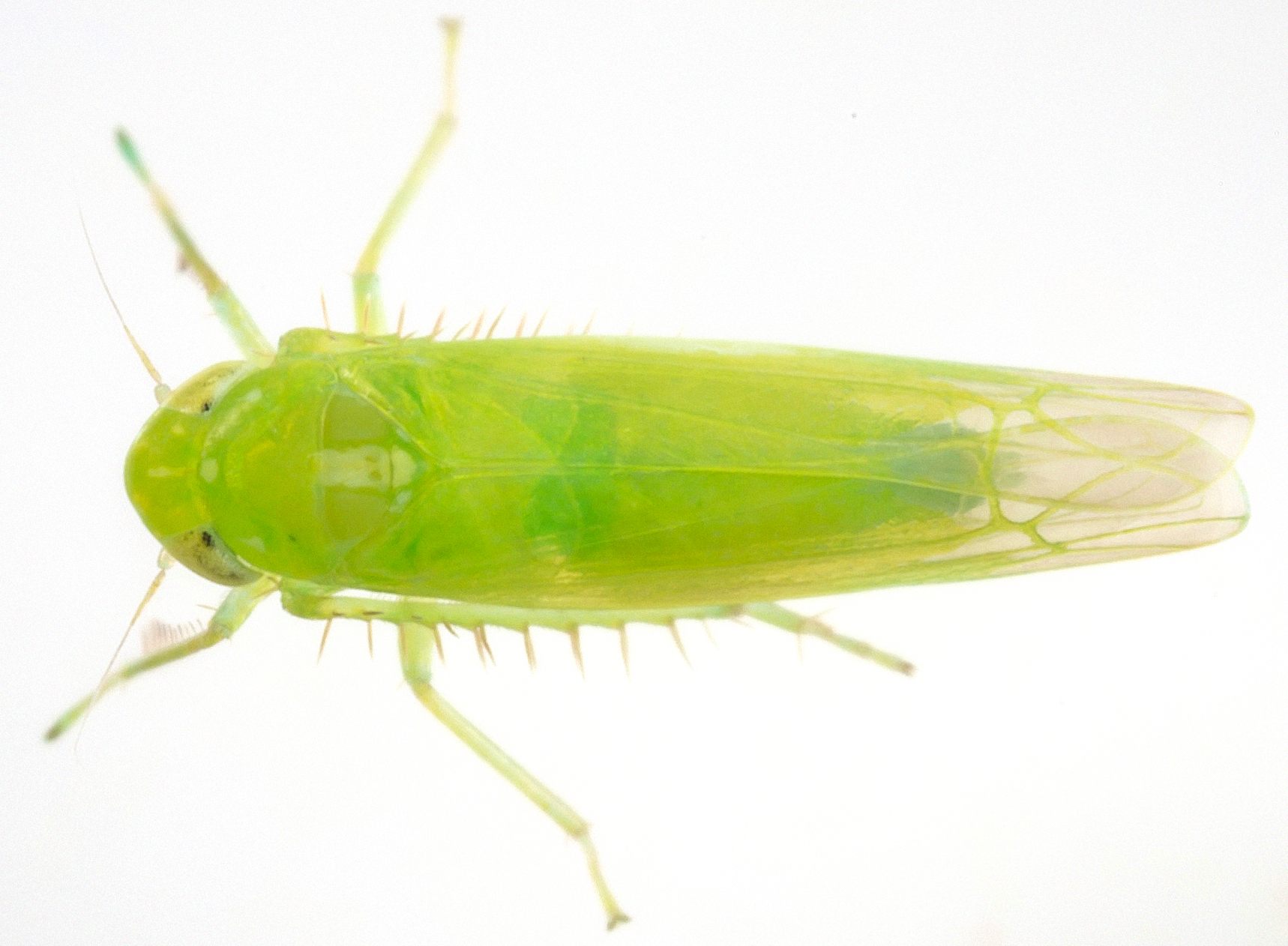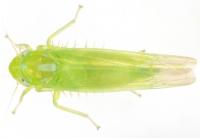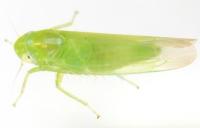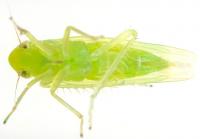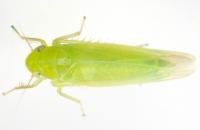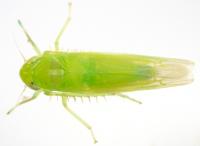| Plant Associates: Has been recorded in the state from Ipomoea batatas (sweet potato), Symphyotrichum subulatum (eastern annual saltmarsh aster), Vicia sp, Melilotus sp. (vetch, sweetclover), and Dahlia sp.; also known from Medicago polymorpha, Medicago sativa, Trifolium repens, Aster sp., and others (3I) |
| Comment: The name "bifurcata" comes from the bifurcate anal hook, unique to this species (but only visible through dissection). There are several other bright green Empoasca species that resemble bifurcata and therefore an identification may not be possible without analyzing a specimen. An underside shot, especially of a male, might be enough to determine an identification since the male subgenital plates are quite distinctive and unique for this species. The first species below, recurvata, HAS been recorded from North Carolina; the rest have not been recorded here yet but very likely do occur in North Carolina.
recurvata- The dorsum is a green color; there are few symmetrical cream-colored markings on the head and thorax. The face is pale, without any dark spots. The pronotum lacks any dark markings and has three white spots, which may sometimes be fused, along the anterior margin. The vertex is strongly rounded and bulbous; it has a pair of pale green spots near the margin. The wings lack any spots and are yellowish-green. The male subgenital plates are long and slender with acute, upturned apices. Adults are around 2.75 mm long.
chelata- The dorsum is a pale green or yellow color, sometimes bright green with an orange tinge; there are few symmetrical cream-colored markings on the head and thorax. The crown lacks any pale spots. The face is pale, without any dark spots. The pronotum lacks any dark markings. The wings lack any spots. The male subgenital plates are pointed and divergent from one another. The vertex is produced and bluntly angled. Male subgenital plates are long and tapered to blunt apices. The female pregenital sternite is roundedly produced. Adults are around 3.0 mm long.
plebeia- The dorsum is a green color; there are few symmetrical cream-colored markings on the head and thorax. The crown lacks round spots. The face is pale, without any dark spots. The pronotum lacks any dark markings. The vertex is angularly produced. The wings lack any spots and are greenish subhyaline in color. The male subgenital plates are long and narrow with upturned tips. Adults are around 3.0 mm long. |

 »
»
